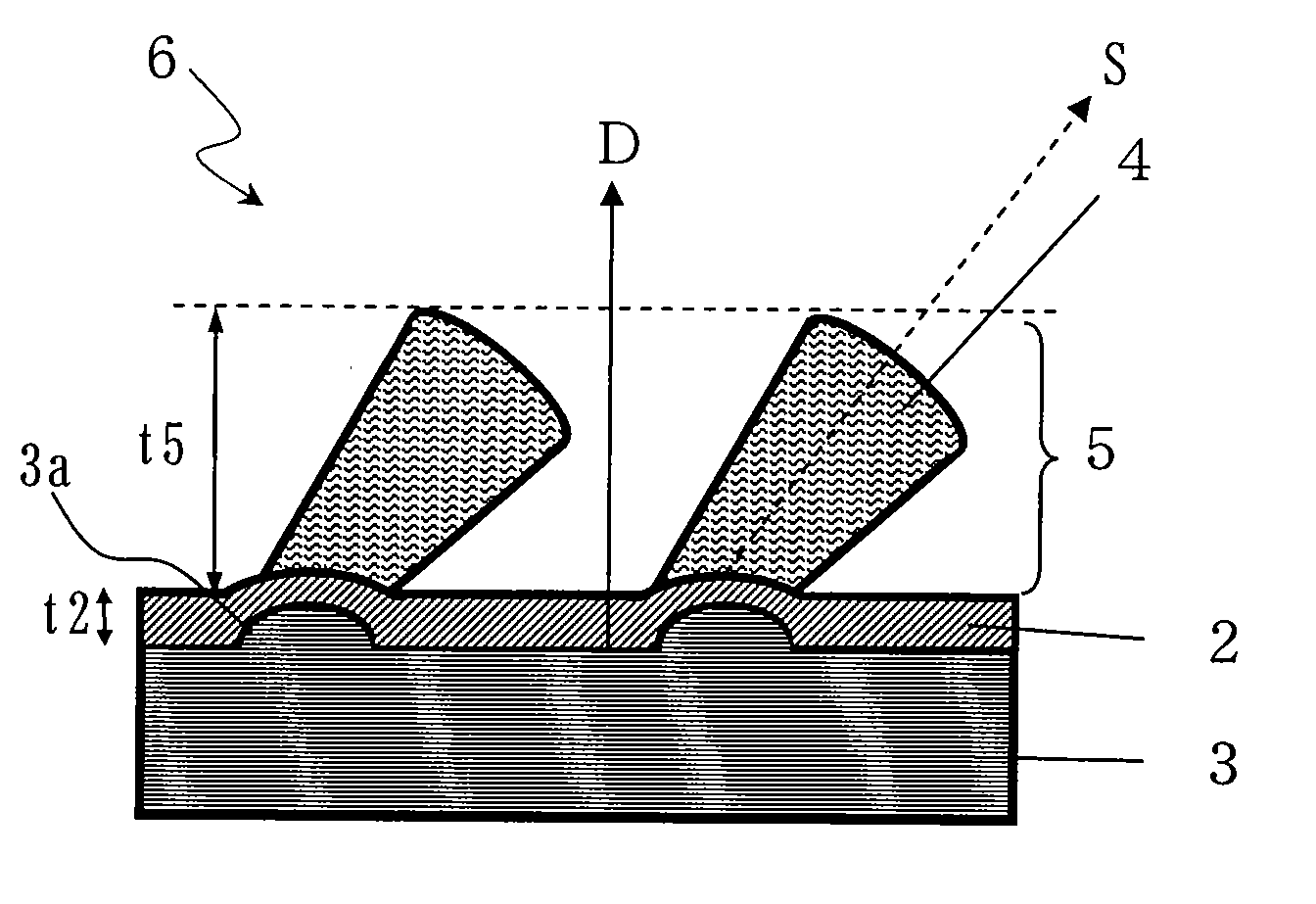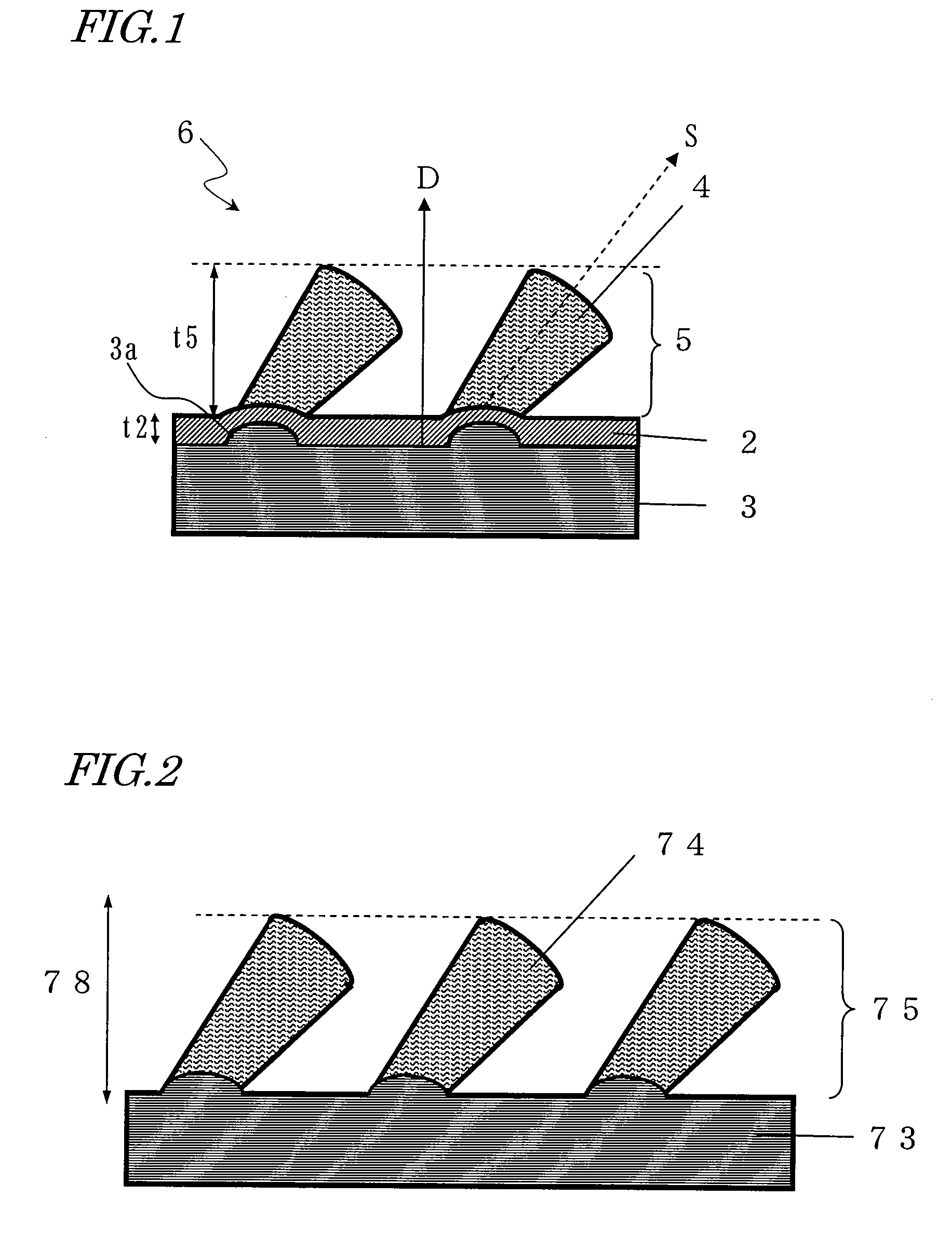Electrode for nonaqueous electrolyte secondary battery, method for producing same, and nonaqueous electrolyte secondary battery comprising such electrode for nonaqueous electrolyte secondary battery
- Summary
- Abstract
- Description
- Claims
- Application Information
AI Technical Summary
Benefits of technology
Problems solved by technology
Method used
Image
Examples
first embodiment
[0057]Hereinafter, with reference to the drawings, embodiments of the electrode for a lithium-ion secondary battery according to the present invention will be described.
[0058]First, FIG. 1 is referred to. FIG. 1 is a schematic cross-sectional view of an electrode for a lithium-ion secondary battery (hereinafter simply referred to as an “electrode”) according to the present embodiment.
[0059]An electrode 6 includes a current collector 3, a first active material layer 2 formed on the surface of the current collector 3, and a second active material layer 5 provided on an upper face of the first active material layer 2. The second active material layer 5 is composed of a plurality of active material particles 4. The first active material layer 2 is formed so as to cover the surface of the current collector 3, and is mainly of a chemical composition represented as SiOy (1.0≦y4 are mainly of a chemical composition represented as SiOx (0≦xx). Moreover, the area in which the plurality of act...
second embodiment
[0117]Hereinafter, a method of producing an electrode according to a second embodiment of the present invention will be described. The method of the present embodiment differs from the methods which have been described with reference to FIG. 5 and FIG. 6 in that the first active material layer 2 and the second active material layer 5 are successively formed by using the same evaporation source, within the same vacuum chamber.
[0118]FIG. 8 is a diagram for explaining the production method according to the present embodiment. For simplicity, FIG. 8, constituent elements which are similar to those of the vapor deposition apparatus 100 and 200 shown in FIG. 6 are denoted by like reference numerals, and descriptions thereof are omitted.
[0119]In the present embodiment, a vacuum deposition apparatus 300 shown in FIG. 8 is used to form the second active material layer 5, which is composed of the first active material layer 2 and the active material particles 4, on the surface of the foil-lik...
example 1
[0128]With the methods described above with reference to FIG. 5 and FIG. 6, an electrode for a lithium-ion secondary battery of Example 1 was produced. The specific production method will be described.
[0129]First, by using the vapor deposition apparatus 100 shown in FIG. 5, the first active material layer 2 was formed on the surface of the current collector 3. A Cu foil (thickness: 40 μm) having a surface roughness Ra of 2.0 μm was used as the current collector 3. Prior to vapor deposition, vacuum evacuation was performed by using the vacuum pump 25 until the interior of the vacuum chamber 10 reached 3×10−3 Pa. Thereafter, in the vacuum chamber 10, the current collector 3 was moved from the supply roll 11 onto the substrate cooling roll 14 via the pulleys 13, and the current collector 3 was allowed to travel along the substrate cooling roll 14 at a speed of 4 m / min (speed of substrate travel). In the meantime, the evaporation pot 23 containing 200 g of Si raw material 22 was irradia...
PUM
 Login to View More
Login to View More Abstract
Description
Claims
Application Information
 Login to View More
Login to View More - R&D
- Intellectual Property
- Life Sciences
- Materials
- Tech Scout
- Unparalleled Data Quality
- Higher Quality Content
- 60% Fewer Hallucinations
Browse by: Latest US Patents, China's latest patents, Technical Efficacy Thesaurus, Application Domain, Technology Topic, Popular Technical Reports.
© 2025 PatSnap. All rights reserved.Legal|Privacy policy|Modern Slavery Act Transparency Statement|Sitemap|About US| Contact US: help@patsnap.com



